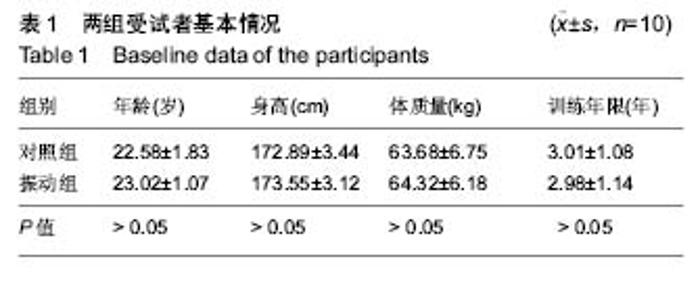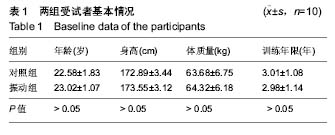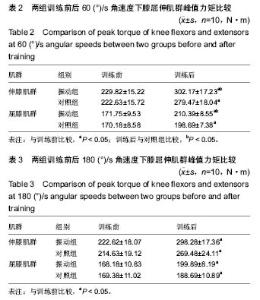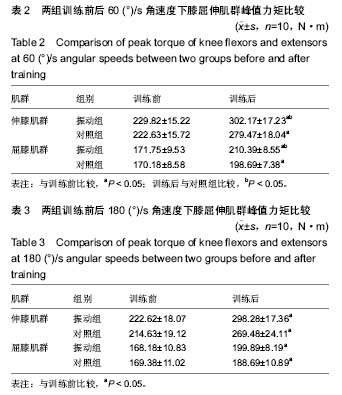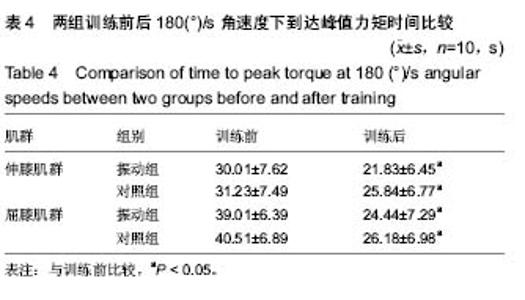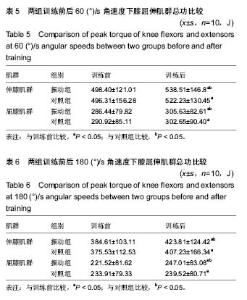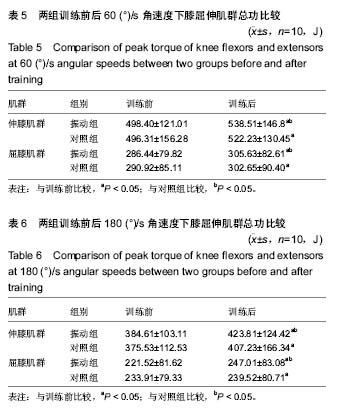| [1] 刘英伟,邹晓峰.振动训练对速滑运动员下肢肌力影响的实验研究[J].沈阳体育学院学报,2012,31(1):81-84.
[2] Bosco C, Cardinale M, Tsarpela O. Influence of vibration on mechanical power and electromyogram activity in human arm flexor muscles. Eur J Appl Physiol Occup Physiol.1999; 79(14):306-317.
[3] 周生灵.振动训练对田径运动员下肢爆发力和身体成分的长时效应研究[J].北京体育大学学报,2011,34(11):119-122.
[4] 辜伟,程亮.优秀女子武术运动员膝关节等速力量测试研究[J].成都体育学院学报,2013,39(4):77-79.
[5] 汪德勇.振动刺激结合力量训练对运动员下肢肌力和平衡的影响[D].北京:北京体育大学,2016.
[6] 谷茂恒,刘文峰,陶小平.振动训练缓解肌肉运动性疲劳的sEMG研究[J].湖南师范大学自然科学学报,2015,38(4):29-33.
[7] 贾蒙蒙,吴卫兵,伍勰,等.FIFA11+练习对足球运动员膝关节生物力学特征和动态平衡能力的影响[J].中国体育科技, 2018,54(2): 59-65.
[8] 崔运能,李绍林,张鑫涛,等.男性职业足球运动员膝关节损伤的MRI分析[J].临床放射学杂志,2015,34(1):97-101
[9] 孙越颖,高峰,杜文娅.不同频率振动训练对排球运动员核心区力量及稳定性的影响[J].成都体育学院学报,2016,42(2):76-81.
[10] 王晓东.振动训练对足球专项大学生专项身体素质影响的研究[D]. 北京:北京体育大学,2013.
[11] 晏冰.振动训练[M].北京:北京体育大学出版社,2010.
[12] 黄翼.振动训练对短距离游泳运动员体能及专项成绩影响研究[D]. 北京:北京体育大学 2017.
[13] 张自云,金成吉,解超.全身振动训练对我国大学生膝关节肌力影响的Meta分析[J].中国学校体育(高等教育),2017,(5):78-84.
[14] 周桂琴,尹军.国内外振动训练在训练学领域比较分析[J].武汉体育学院学报,2010,44(12):67-73.
[15] Issurin VB,Liebermann DG,Tenenbaum G.Effect of Vibratory Stimulation Training on Maximal Force and Flexibility.J Sports Sci.1994;12(5):561-567.
[16] Delecluse C,Roelants M,Verschueren S.Strength Increase after Whole Body Vibration Compared with Resistance Training.Med.Sci Sports Exerc.2003;35(6):1033-1040.
[17] 邓京捷,李吉如.振动训练对小轮车运动员下肢肌群肌力影响的研究[J].广州体育学院学报,2010,30(3):78-80.
[18] 彭春政,危小焰,张晓韵.振动训练的机制和作用效果的研究进展[J].西安体育学院学报,2002,19(3):45-48.
[19] Thue K,Malene B,Paolo C,et al.Effect of Vibration and Resistance Training on Neuromuscular and Hormonal Measures.Eur JAppl Physiol,2006;96(14):615-625.
[20] 许鑫华,沈艳梅.振动训练对力量、柔韧及平衡能力的影响[J].浙江体育科学,2015,(2):103-107.
[21] 张会敏.振动训练对膝关节前交叉韧带重建术后本体感觉和步态的影响[D]. 成都:成都体育学院.2018.
[22] 黄启闯,徐红旗.下肢肌肉力量分类及训练方法的综述[J].体育科技文献通报,2018,(9):3-5.
[23] 高瞻乐,程亮,周继和,等.等速力量训练对优秀运动员膝关节前交叉韧带重建患者术后肌肉力特征的研究[A].石家庄:第十九届全国运动生物力学学术交流大会论文摘要汇编,2017:213-214.
[24] 罗兴来,刘雪峰,程亮.四川省少年男篮运动员膝关节等速肌力特征分析[J].四川体育科学,2016,(3):36-39.
[25] 傅磊.振动训练对北体大足球专业学生下肢最大力量、爆发力影响的研究[D].北京:北京体育大学,2010.
[26] 郑成,王广兰,王晶.青年男子足球运动员膝关节等速肌力特征研究[A].金华:第十三届全国运动生物力学学术交流大会论文汇编,2009.
[27] Jackson SW,Turner DL.Prolonged Vibration Reduces Maximal Voluntary Knee Extension Performance in Both the Ipsilateral and the Contra-Lateral Limb in Man.Eur J Appl Physiol.2003;88(33):380-386. |
